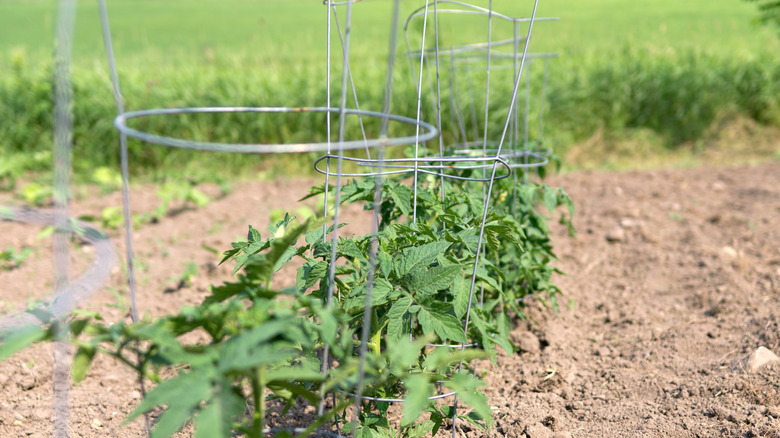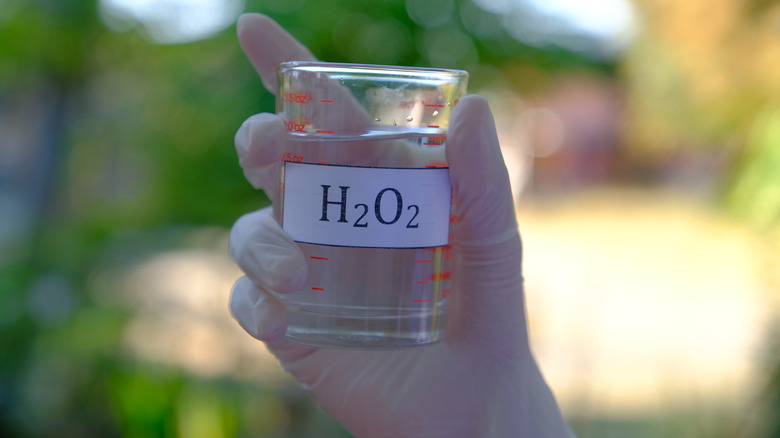You Should Be Using Hydrogen Peroxide To Keep Your Tomato Cages Spotless
We may receive a commission on purchases made from links.
The use of tomato cages versus other types of staking and trellising methods is hotly debated, with some proclaiming that cages are one of the worst things you can use to support your tomato plants and others saying it's impossible to grow good tomatoes without them. Thankfully, we're not here to take sides — at least not today. Instead, if you stand by the standard metal frames, we ask gardeners to add "disinfect tomato cages" to their list of end-of-season garden chores. Whether your stakes are coated with plastic or powder or simply feature galvanized steel, cleaning and sanitizing them between uses is the best way to avoid spreading plant diseases and keep them in good condition. Among the easiest methods for disinfection uses hydrogen peroxide, but you'll need a few other supplies as well.
Gather a hose with a sprayer attachment, a sponge for scrubbing, a spray bottle, and something to protect the ground with, like a tarp. Then, lay out your cages in a sunny spot away from your garden. Before sanitizing the supports, you'll need to scrub or spray off any leftover plant debris, like vining stems. This way, your hydrogen peroxide can make quick work of any microscopic bacteria or fungi trying to hitch a ride on the cages for the next growing season. If you live somewhere where you can grow tomatoes almost year-round, you won't want to risk disease spreading, so you should always disinfect your tomato cages before reuse. Here's how.
The best way to clean tomato cages with hydrogen peroxide
Sterilizing your tomato cages with hydrogen peroxide may feel low on your priority list while cleaning up your garden at the end of summer. Yet, the process is quite easy and shouldn't take you longer than a few minutes of active work. To start, grab your bottle of 3% hydrogen peroxide. This medical-grade solution comes pre-mixed with 97% water, meaning you won't need to dilute it yourself. Simply pour the peroxide into any clean spray bottle or try retrofitting a spray nozzle onto your solution's container — Amazon sells spray bottle tops in packs of four for about $7. With the disinfectant ready to go, you can head out to the location where you previously laid out and hosed down your tomato cages. Ensure you protect your grass or pavement from the hydrogen peroxide with a tarp or another sheet of plastic before liberally applying the chemical compound to every part of the tomato cages — turning them as needed. Then, allow them to dry in the sun for at least 15 minutes before rinsing them off and storing them in your shed, garage, or wherever else you keep your gardening supplies.
Some people prefer to leave their tomato cages in sunlight for several hours or even days, but since hydrogen peroxide decomposes rather quickly–especially in sunlight–a longer wait time is unlikely to contribute to improved disinfection. By the next growing season, you'll be thanking a past version of yourself for breathing new life into your beloved gardening tools.

